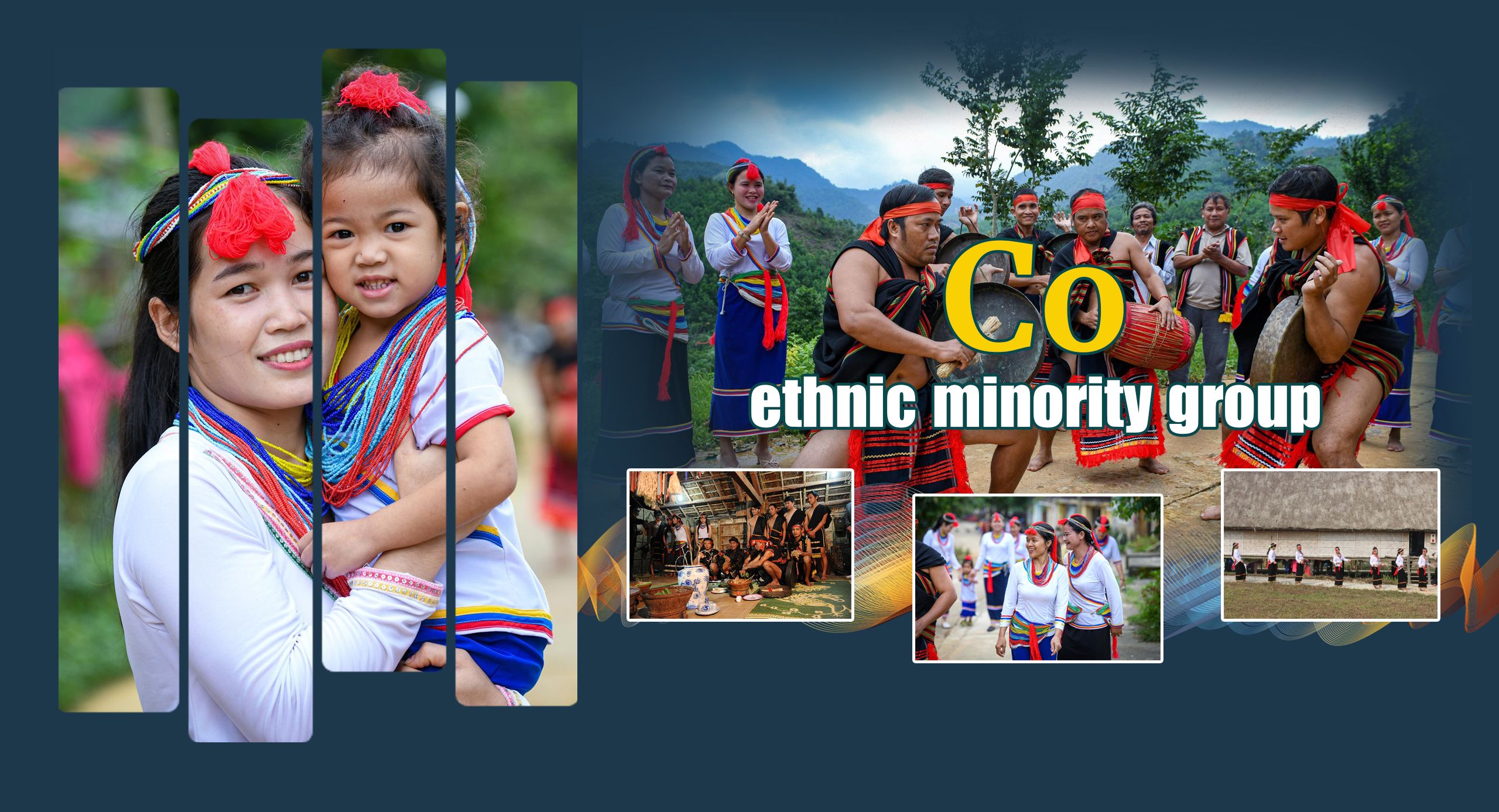
The Co ethnic minority group has more than 40,000 people, living mainly in the provinces of Quang Ngai and Quang Nam. Currently, thanks to the policies of the Party and State, the lives of the Co people have been gradually improved and integrated with the lives of the people of other ethnic groups.
1. History
Most researchers have believed that the Co people are one of the indigenous inhabitants in the Truong Son area - the Central Highlands.
Self-name: Cor, Col.
Other names: Cua, Trau.
2. Population
According to the census on the 53 ethnic minorities as announced on April 1, 2019, the total population of the Co ethnic minority group is 40,442 people. Of whom, 20,548 are male and 19,894 people are female. 96.5% of the population live in rural areas.
3. Geographic distribution
The Co people live mainly in Tra Bong and Tra Mi in the northwest of Quang Ngai Province and southwest of Quang Nam Province. The Co people are also scattered across the provinces of Kon Tum, Gia Lai, Dak Lak, and Thua Thien Hue.
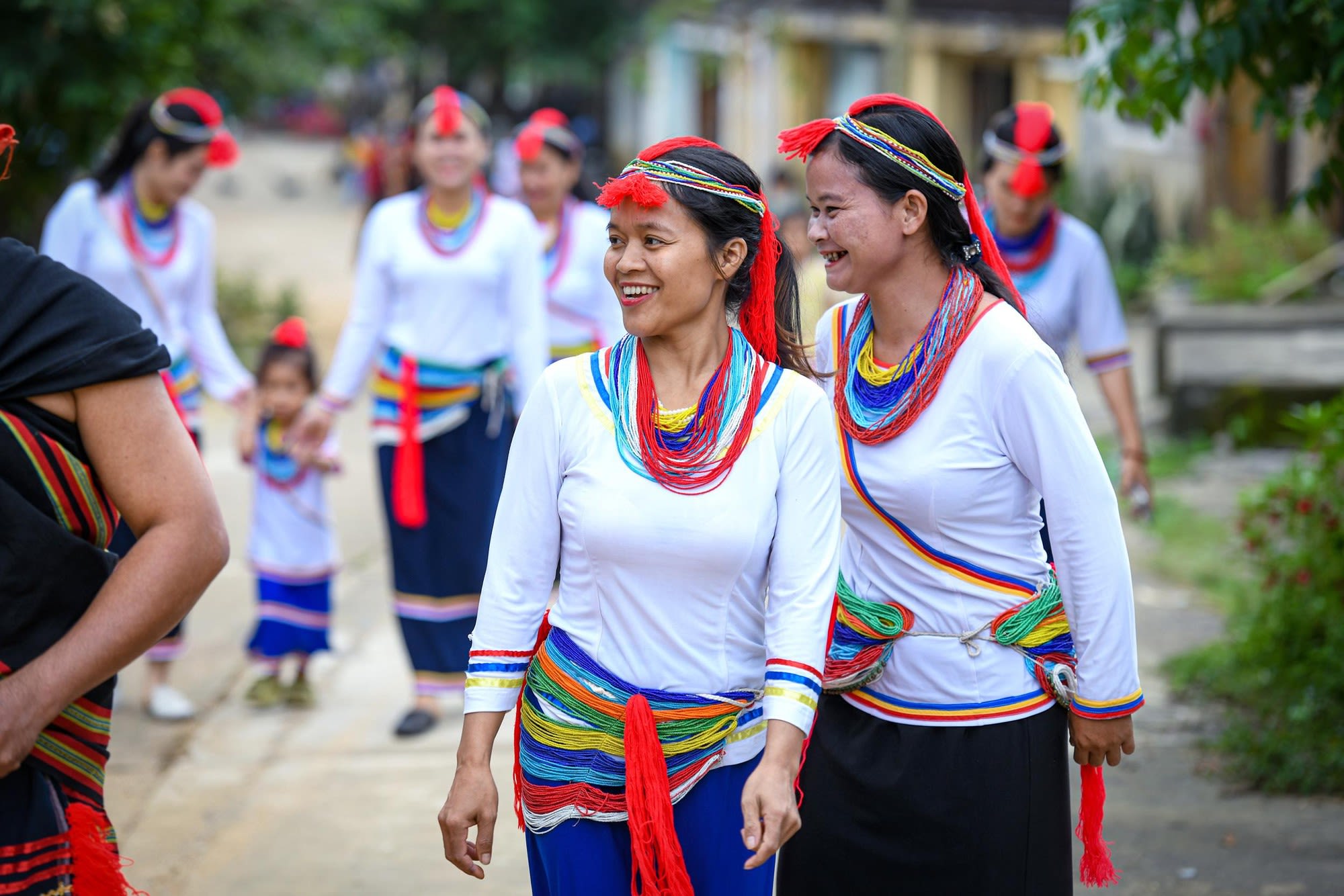
Traditional costumes of Co women (Photo: THANH DAT)
Traditional costumes of Co women (Photo: THANH DAT)
4. Language
The language belongs to the Mon-Khmer language group (Southern Asian language family), which is relatively close to other ethnic groups in the northern Central Highlands and neighbouring areas such as Hre, Xo Dang, and Ba Na. The written word was born in the period before 1975 with the use of Latin letters, but this is not common nowadays. In areas bordering the Hre such as Son Ha District, Quang Ngai Province, the Co can speak the Hre language. The vast majority of Co people know Mandarin.
Education: According to the 2019 Survey on 53 ethnic minority groups, the rate of people aged 15 years and over who can read and write in general is 75.2%; the percentage of children attending primary school is 102.2%; the percentage of children attending lower secondary school is 87.8%; the percentage of children attending high school is 49.2%; the percentage of out-of-school children is 14.4%; and the percentage of people aged 15 and over who can read and write their own ethnic script is 0.8%.
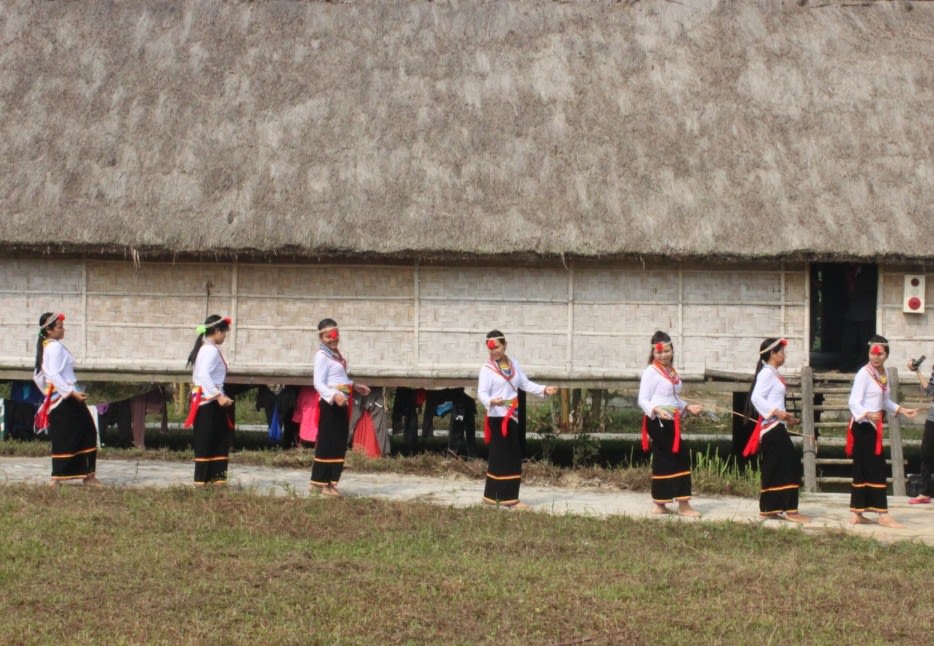
Co girls perform the Ca Dau dance during the New House Celebration (Photo: the Vietnam National Village for Ethnic Culture and Tourism).
Co girls perform the Ca Dau dance during the New House Celebration (Photo: the Vietnam National Village for Ethnic Culture and Tourism).
5. Main features
Traditional houses: Long stilt houses with two gable doors. The house is divided vertically into 3 parts: the aisle in the middle, a side divided into small rooms for families to live separately, and a side used as a place for common activities (receiving guests, meeting, organising festivals, dining, knitting, playing, etc...).
Costumes: Clothing of the Co is mainly bought from the Xo Dang and the Vietnamese. According to the tradition, men wear loincloths, topless, women wear skirts and blazers; in the cold season, they wear shawls. The long clothes with turbans imported from the plains were used to show off in festivals, especially well-to-do elders.
Social relations: Each village has an "elder" who is respected and obeyed by everyone.
Marriage: The form of marriage in which the husband resides is common. The custom allows that if a wife dies, the husband can continue to marry her sister, but a widow cannot marry her brother-in-law; if 2 brothers marry 2 sisters, then the older brother must marry the older sister and the younger brother must marry the younger sister. If the daughter of one family is already married to another family, then 2-3 generations later, the other family will marry the daughter to this family. Relatives are not allowed to get married. The wedding is simple, compact, and does not cost much.
Funeral: Wooden coffin, carved in the style of a single carpentry. The dead were buried in the village's graveyard, located not far from the residence.
Worshiping: The high peaks are called by the Co people as Ong (grandfather) and Ba (grandmother) mountains. They believe that there are "gods" residing there. The system of "ghosts" (ka muych) and "gods" (kii, ghosts) are very crowded: ordinary ghosts, abnormal ghosts, cinnamon ghosts, banyan ghosts, water ghosts, fire stove gods...
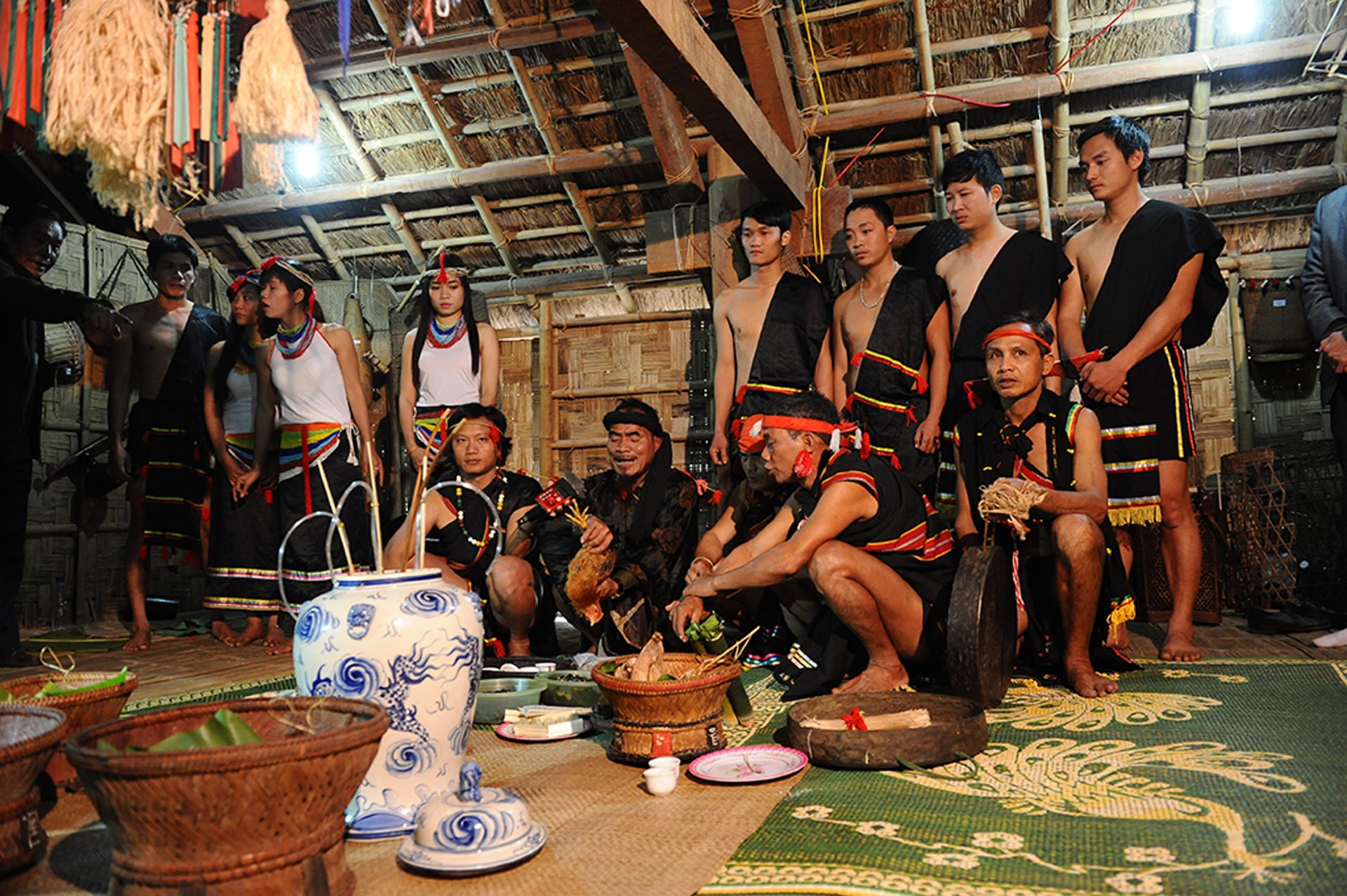
The shaman performs the worshiping ceremony in the house during the rain praying ceremony of the Co people (Photo: the Vietnam National Village for Ethnic Culture and Tourism).
The shaman performs the worshiping ceremony in the house during the rain praying ceremony of the Co people (Photo: the Vietnam National Village for Ethnic Culture and Tourism).
Holidays: The Co people have many festivals, the biggest one is the buffalo stabbing ceremony to sacrifice to gods - this is also a big festival in the village. In addition, the holiday associated with the end of the upland rice season is a bustling occasion for activities.
Calendar: The calculation of the date is equivalent to the Vietnamese lunar calendar, but only 10 months, followed by a rest period after cultivation.
Arts: the Co people like music, 3-piece gongs are popular; their instruments include drums and erhu types. Dance only appears in the buffalo stabbing ceremony. Xru (Klu) and Agii folk songs are widely circulated. Ancient tales are quite diverse, with legends, fables, etc. Decorative art is most concentrated in the ceremonial pillar and the "gu" in the buffalo stabbing festival.
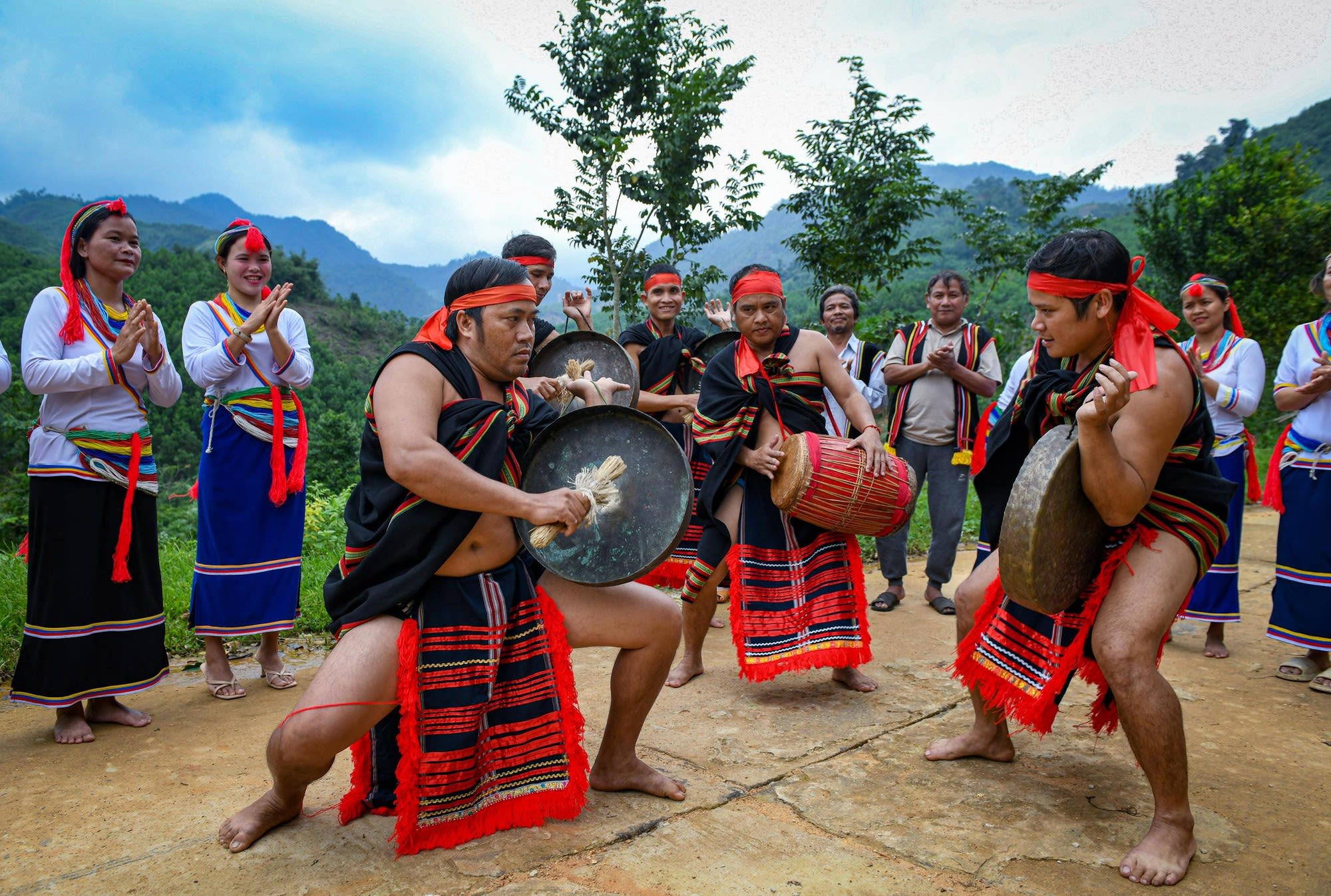
Gong performance of the Co people (Photo: THANH DAT)
Gong performance of the Co people (Photo: THANH DAT)
6. Economic conditions
Upland economy is the main source of livelihood, upland rice is the main food. Cultivation in the form of clearing forests, burning, poking holes for seeds, threshing rice by hand. Betel nut and cinnamon of the Co people are famous for a long time. The Co people raise buffaloes, pigs, and chickens first for sacrifice; dogs are found in almost every household. Weaving and blacksmithing did not develop. They have beautiful and diverse knitwear.
The rate of poor households of the Co ethnic group is 57.1%, the rate of near-poor households is 16.7%. The unemployment rate is 2.08%; the percentage of trained workers with degrees and certificates is 8.0 %; the percentage of labourers working in the non-agricultural sector is 12.4%; the percentage of labourers working in management or technical qualification at high and middle level is 3.6%; and the percentage of households doing traditional crafts is 0.12%.